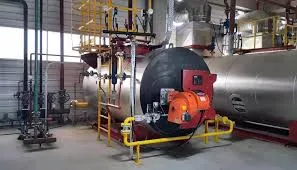Déc . 24, 2024 19:06 Back to list
DIY Heat Exchanger Projects for Efficient Home Heating Solutions
Building a Home-Made Heat Exchanger A Comprehensive Guide
In today's world, energy efficiency is more important than ever. Homeowners and DIY enthusiasts alike are seeking reliable ways to reduce heating costs and improve energy utilization in their homes. One effective solution is building a heat exchanger. A heat exchanger allows for the transfer of heat from one medium to another without mixing them, making it a crucial component in heating and cooling systems. In this guide, we will delve into the process of constructing a home-built heat exchanger, focusing on the necessary materials, design considerations, and benefits.
Understanding Heat Exchangers
A heat exchanger works by facilitating the transfer of thermal energy between two fluids — typically a hot fluid and a cold fluid. This process occurs through conduction, convection, and sometimes radiation. Common applications of heat exchangers include heating systems, air conditioning units, and even swimming pool heaters. The efficiency of a heat exchanger largely depends on its design, the materials used, and the flow rates of the fluids involved.
Materials Required
Before diving into the construction process, you'll need to gather the right materials. Here's a list of essential components
1. Copper or Aluminum Tubing These materials are excellent conductors of heat and are frequently used in heat exchanger designs. 2. PVC or PEX Pipes The outer casing of the heat exchanger can be made using durable plastic piping, which ensures insulation and structural integrity. 3. Insulation Material To minimize heat loss, use foam or fiberglass insulation to wrap around your heat exchanger. 4. Hydraulic Fittings and Valves These will allow you to connect the different sections of your system and control fluid flow. 5. Sealing Materials Gasket materials or silicone sealant will be needed to ensure a leak-proof assembly.
Design Considerations
1. Type of Heat Exchanger Decide on the type of heat exchanger you want to build. The most common types are shell-and-tube and plate heat exchangers. Shell-and-tube exchangers are great for larger systems, while plate exchangers are compact and suitable for residential applications.
2. Flow Arrangement Consider whether you want a counterflow or parallel-flow arrangement. Counterflow heat exchangers are generally more efficient, as the hot and cold fluids flow in opposite directions, maximizing temperature gradients.
3. Size and Capacity The size of your heat exchanger will depend on the heating load you need to support. Calculate the required BTU output by considering factors such as the size of the space you want to heat and the desired temperature increase.
home built heat exchanger

Construction Steps
1. Design the Layout Sketch your heat exchanger's layout, detailing the position of the tubing and piping. This diagram will guide your assembly process.
2. Cut the Tubing Using a pipe cutter, carefully cut the copper or aluminum tubing to the desired lengths as per your design.
3. Assemble the Heat Exchanger Starting with the inner tube (the hot fluid pathway), arrange the outer tubing for the cold fluid. Connect the ends using hydraulic fittings, ensuring a secure fit.
4. Seal and Insulate Apply sealant where necessary and wrap the assembly in insulation material to minimize heat loss.
5. Install the Unit Place the heat exchanger in position, connect it to your existing heating or cooling system, and ensure that all connections are tight and leak-free.
6. Test the System Before full operation, conduct tests to check for leaks and ensure efficient thermal exchange. Monitor temperatures to verify that the system meets your energy needs.
Benefits of a Home-Made Heat Exchanger
Building your own heat exchanger can provide significant benefits beyond just saving money on energy costs. A homemade unit offers customization to suit your specific needs, while also providing hands-on experience in understanding thermal dynamics. Furthermore, you will also contribute to a more sustainable lifestyle by maximizing the efficiency of your heating and cooling systems.
In conclusion, constructing a home-built heat exchanger is an excellent DIY project for those looking to improve energy efficiency in their homes. With the right materials and careful planning, you can create a functional and effective system that not only saves you money but also contributes to a more environmentally friendly approach to home heating and cooling. Embrace the challenge and enjoy the benefits of your custom-built heat exchanger!
-
Centrifugally Cast Iron Water Main Pipe | Ductile Iron Solutions
NewsAug.24,2025
-
Durable Cast Steel Concrete Pipe Mold Bottom Rings & Base Trays
NewsAug.23,2025
-
Centrifugally Cast Iron Water Main Pipe for Reliable Mains
NewsAug.22,2025
-
Durable Centrifugally Cast Iron Water Main Pipe
NewsAug.11,2025
-
Centrifugally Cast Iron Water Main Pipes for Reliability
NewsAug.10,2025
-
High-Quality Centrifugally Cast Iron Water Main Pipes
NewsAug.09,2025


